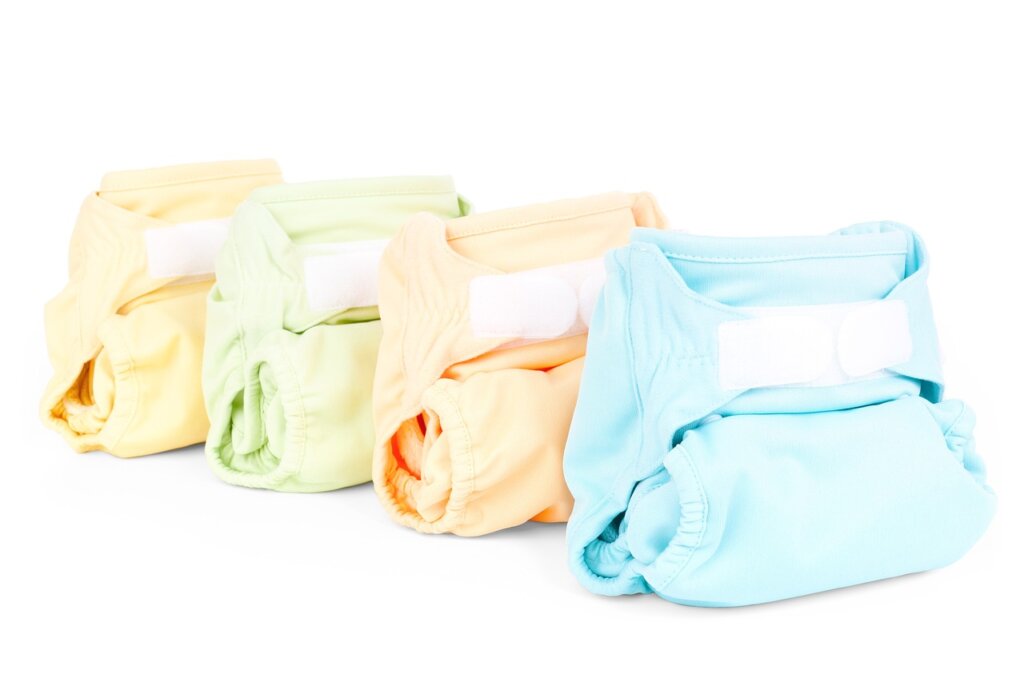As a new mom, one question that often arises is, “How can I dispose of my baby’s used diapers in an environmentally friendly way?” This concern is valid, given the significant environmental impact of disposable diapers. In this blog, we’ll explore various methods for diaper disposal, focusing on commonly used brands like Pampers and Snuggy, backed by scientific facts, and provide expert opinions on the best practices to minimize environmental harm.
1. Understanding the Environmental Impact of Disposable Diapers
Disposable diapers are convenient but have a considerable environmental footprint. They are made from a combination of plastic, superabsorbent polymers, and wood pulp, all of which contribute to waste. According to the Environmental Protection Agency (EPA), disposable diapers can take up to 500 years to decompose in landfills, releasing methane and other harmful gases.
2. Traditional Disposal Methods and Their Drawbacks
Landfilling: The most common method of disposing of used diapers is throwing them in the trash, which eventually ends up in landfills. This method is problematic because:
- Long Decomposition Time: Diapers take centuries to break down, occupying landfill space for generations.
- Methane Emissions: As diapers decompose, they release methane, a potent greenhouse gas that contributes to climate change.
- Leachate Production: The decomposition process can produce leachate, a toxic liquid that can contaminate groundwater.
Incineration: Another method is incinerating used diapers, which involves burning them at high temperatures. While this reduces landfill waste, it has significant drawbacks:
- Air Pollution: Incineration releases pollutants, including dioxins and furans, which can harm human health and the environment.
- Energy Consumption: The process requires substantial energy, further contributing to carbon emissions.
3. Removing and Disposing of Silica Gel from Diapers

Why Silica Gel is Used in Diapers: Silica gel is commonly used in disposable diapers due to its excellent moisture-absorbing properties. It can absorb and retain large amounts of liquid relative to its mass, helping to keep the baby’s skin dry and reduce the risk of diaper rash. This superabsorbent polymer is a crucial component in ensuring the diaper remains effective and comfortable for extended periods.
Modern Diaper Composition: Modern disposable diapers are composed of several layers:
- Top Sheet: The inner layer that touches the baby’s skin, usually made of soft, non-woven fabric.
- Absorbent Core: Contains wood pulp and superabsorbent polymers like silica gel to absorb and lock in moisture.
- Back Sheet: The outer layer made of waterproof material to prevent leaks.
- Elastic Bands: Around the legs and waist to provide a snug fit and prevent leaks.
- Adhesive Tabs: To secure the diaper in place.
Steps to Remove Silica Gel:
- Cut Open the Diaper: Using scissors, carefully cut open the used diaper to access the silica gel beads inside the absorbent core.
- Collect the Gel: Wear gloves and scoop out the silica gel beads into a separate container. Be careful to avoid spillage.
- Seal the Container: Once collected, seal the container to prevent any accidental release of the beads.
Eco-Friendly Uses for Silica Gel:
- Reuse in Household Items: Silica gel can be reused in various household items to keep them dry. Place the beads in small cloth bags and use them in shoe cabinets, closets, or storage boxes to prevent moisture buildup.
- Drying Flowers and Seeds: Use silica gel to dry flowers and seeds for preservation. Place the items in a container with silica gel and allow them to dry naturally.
- Humidity Control: Place the collected silica gel beads in areas prone to dampness, such as basements or attics, to control humidity levels.
Disposing of the Remaining Diaper Components:
- Separate Plastic Components: The plastic back sheet and adhesive tabs can be separated and collected for recycling if your local facility accepts them.
- Dispose of the Organic Material: The wood pulp and any remaining organic material can be composted if your local composting facility accepts such materials.
- Recycle the Elastic Bands: Some recycling programs accept elastic bands, though this varies by location. Check with your local facility for guidelines.
4. Eco-Friendly Disposal Methods for Disposable Diapers
Biodegradable Diaper Alternatives: While not all disposable diapers are biodegradable, some brands offer eco-friendly alternatives. Consider switching to brands that use plant-based materials and are certified biodegradable. These diapers break down more quickly and have a reduced environmental impact.
Diaper Recycling Programs: Some companies and municipalities offer diaper recycling programs for traditional disposable diapers:
- TerraCycle: This company provides a Zero Waste Box for diaper disposal, which they then recycle into useful products. Although this option may come with a cost, it significantly reduces landfill waste.
- Diaper Recycling Technology: Advances in technology are enabling the recycling of diapers into new materials, reducing waste. Research local programs that may offer similar services.
Reusing Diaper Components: Innovative methods are being developed to separate and recycle different components of disposable diapers:
- Plastic Recycling: The plastic components of diapers can be recycled into new plastic products.
- Composting Organic Materials: Some advanced facilities can compost the organic materials from diapers under controlled conditions.
5. Practical Tips for New Moms

Choosing Eco-Friendly Diapers: Select biodegradable or eco-friendly diapers when possible to reduce your baby’s carbon footprint. Look for certifications such as the USDA BioPreferred label or the Global Organic Textile Standard (GOTS).
Proper Disposal at Home:
- Separation of Waste: Separate diaper waste from other household waste to ensure it is properly managed.
- Using Diaper Pails: Invest in a diaper pail designed to contain odors and make diaper disposal more convenient.
Participating in Recycling Programs: Research local diaper recycling programs and participate in them. Companies like TerraCycle offer convenient solutions for disposing of used diapers responsibly.
Educating Yourself and Others: Stay informed about the environmental impact of diaper disposal and share your knowledge with other parents. Advocate for eco-friendly practices within your community.
6. Expert Opinions on Diaper Disposal
American Academy of Pediatrics (AAP): The AAP recommends parents consider using biodegradable disposables or cloth diapers to reduce environmental impact. They emphasize the importance of proper diaper disposal and hygiene practices to protect both the baby and the environment.
Environmental Protection Agency (EPA): The EPA advocates for reducing diaper waste through the use of eco-friendly diapers and supporting recycling programs. They highlight the significant environmental benefits of minimizing disposable diaper use.
World Health Organization (WHO): The WHO does not have a specific stance on diaper types but emphasizes the importance of hygiene in infant care. Regular diaper changes and cleaning are crucial to preventing infections and ensuring overall health.
Read more:
Diaper Bag Essentials: Best Guide to Every Mother
10 Types of New Born Baby Clothes Every Parent Must Know
Best Oils for Baby Massage | Oils to Avoid for Baby Massage
Best Baby Boy Light and Sound Shoes
Conclusion:
Disposing of used diapers in an environmentally friendly way is a significant concern for new moms. By choosing eco-friendly or biodegradable diapers, participating in recycling programs, and considering reusable components, you can reduce your baby’s environmental footprint. As we all strive to protect our planet, every small step counts.
We’d love to hear from you! Share your thoughts and experiences with diaper disposal in the comments below. What methods have you found most effective?
References:
- Environmental Protection Agency. (n.d.). “The Environmental Impact of Disposable Diapers.”
- American Academy of Pediatrics. (n.d.). “Diapering Your Baby: Cloth vs. Disposable.”
- TerraCycle. (n.d.). “Diaper Recycling Programs.”
- Diaper Recycling Technology. (n.d.). “Innovative Diaper Recycling Solutions.”

